Try to picture it: streets full of people in elaborate masks, colored decorations at every corner, the sound of festive music all around, and the laughter of children tossing confetti in the air.
Meanwhile, bakery and pastry shops fill their windows with sweets and pastries, and the smell of freshly baked dough and sugar is so tempting. The scent alone is enough to make passersby pause and gaze longingly at the delicious displays of Carnival treats.
That is Carnival in Italy, or, as it is called by Italians, Carnevale.
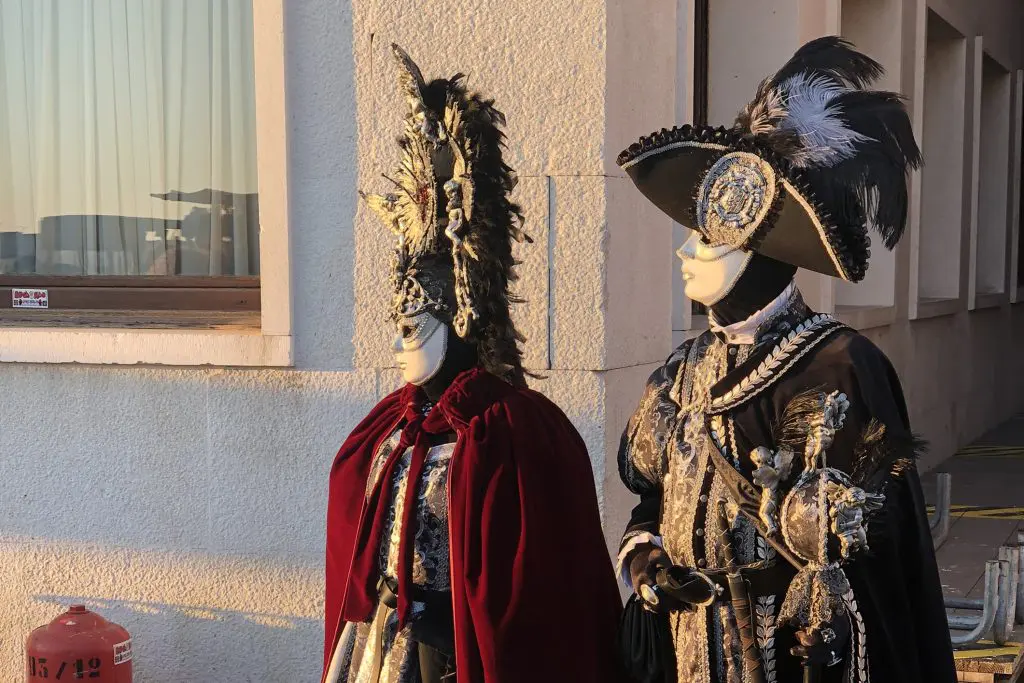
Jump to a section of this article
A Brief History of The Italian Carnival
Carnevale in Italy is one of the most cherished and important festivals, celebrated all around the country.
The origins of the Italian Carnival can be traced back to Roman pagan festivities, such as Saturnalia and Lupercalia, during which people indulged in feasting, disguises, and revelry.
During these celebrations, Romans would set aside social hierarchies, allowing lower classes to participate in the extravagant parties along with nobility and royalty.
This idea of social freedom and excess has remained the core of the Carnival. Subsequently, with the spread of Christianity, these pagan festivities were incorporated into the Catholic calendar as the final fest before the fasting period of Lent.
The terms Carne Vale, meaning “farewell to meat” in Latin, reflect this transition.
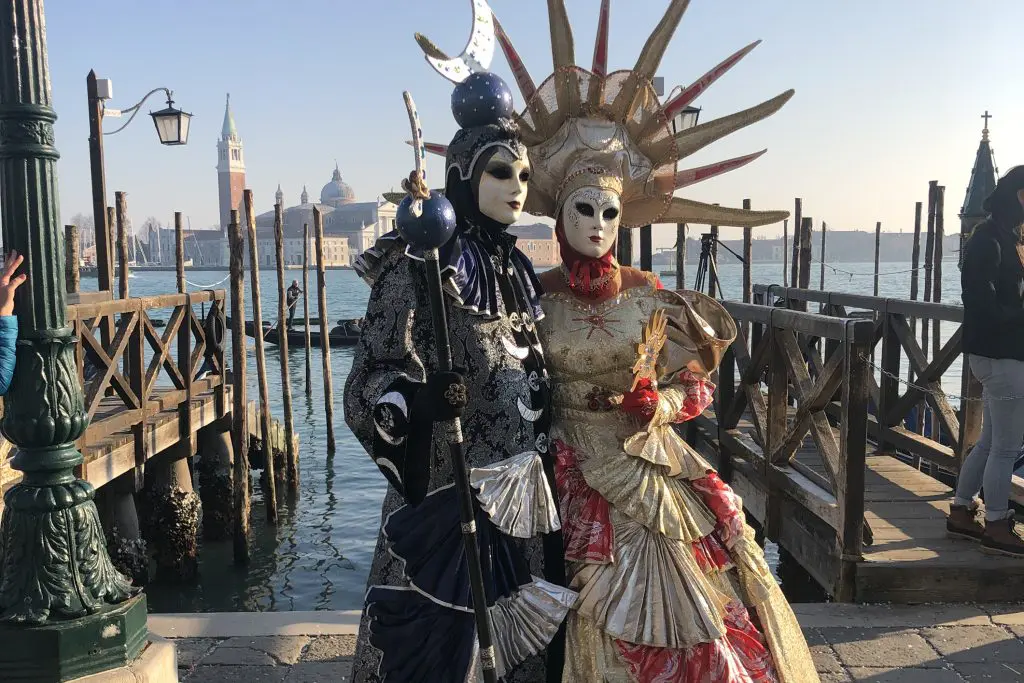
Where To Experience Τhe Italian Carnival
Despite its ancient origins, Carnival in Italy has evolved, becoming a festivity where traditions, religious customs, and new forms of entertainment blend.
What once was a time for pure indulgence and chaos is now a structured yet extravagant spectacle, carefully planned yet bursting with spontaneous joy.
Today, it is considered an Italian cultural treasure. Each region celebrates it with its unique history, symbolism, and traditions, creating a rich tapestry of festivities that vary not just from one region to another, but also from one city to another.
From small towns with centuries-old traditions and rituals to major cities hosting grand and spectacular events, each place adds its own flair to its beloved celebrations.
Among the many diverse Carnival traditions and celebrations, some stand out as particularly iconic and well-known nationally and internationally.
These celebrations are famous for their unique ways of making Carnival, with vibrant parades, exciting events, and distinctive customs that are deeply intertwined with their traditional and historical significance.
Venice Carnival
One of them is Venice’s Carnival. It is considered one of the most iconic in the country, known worldwide due to the elaborate masks, glorious events, like the unmissable opening ceremony, and the sophisticated masquerade gala balls held around the city.
Gondolas glide through the misty canals, their passengers draped in lavish velvet cloaks, whispering behind their delicate masks. The entire city seems to transform into a dreamscape, where reality and fantasy blur into one.
First recorded in 1296, when the Venetian Senate made the day before Lent a public holiday, the festival let people celebrate and wear disguises, briefly erasing social differences and bringing the community together.
Hiding identities was possible through what today represents the symbol of the Venetian Carnival, masks. The tradition of wearing masks is a key part of the Venetian Carnival and has become a cherished part of the city’s heritage.
Today, only a few mask-makers remain, keeping the craft alive. Each mask, whatever the material used to create it, tells a story, and it is created to hide identities and create mystery.
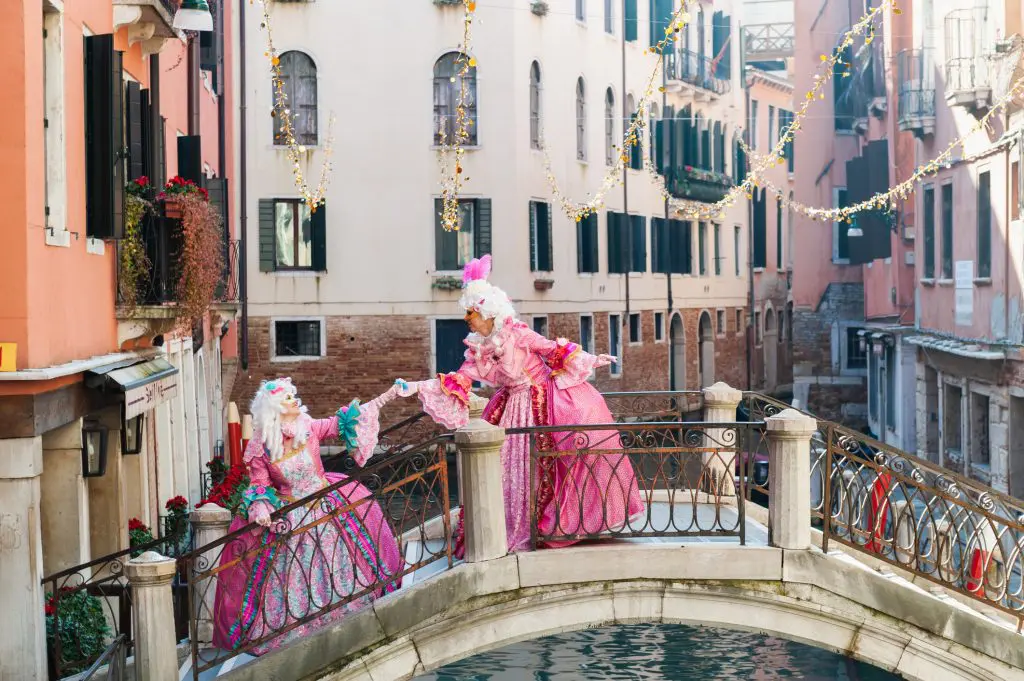
Viareggio Carnival
In Tuscany, the Viareggio Carnival is another famous celebration. It is especially known for its vibrant and spectacular parades, featuring massive papier-mâché floats that move along the city’s promenade.
These aren’t just simple decorative structures; they are moving works of art, towering high above the crowds, animated with mechanical parts, lights, and sometimes even smoke effects, creating a mesmerizing display of craftsmanship and satire.
These intricately crafted, towering figures, some several meters high, often depict political figures, celebrities, or current events, blending humor with social awareness.
The artists who create these statues work for months on every single detail of their crafted moving creatures, showcasing the region’s rich tradition of craftsmanship and creativity.
Alongside these massive floats, the parade features choreographed performances, dancers, and lively music, with locals actively participating and fully immersing themselves in the celebration.
The Viareggio Carnival is more than just a display of artistic talent. It brings people together, uniting locals and visitors in a vibrant celebration of creativity and tradition. The event creates a sense of community and joy among all participants.
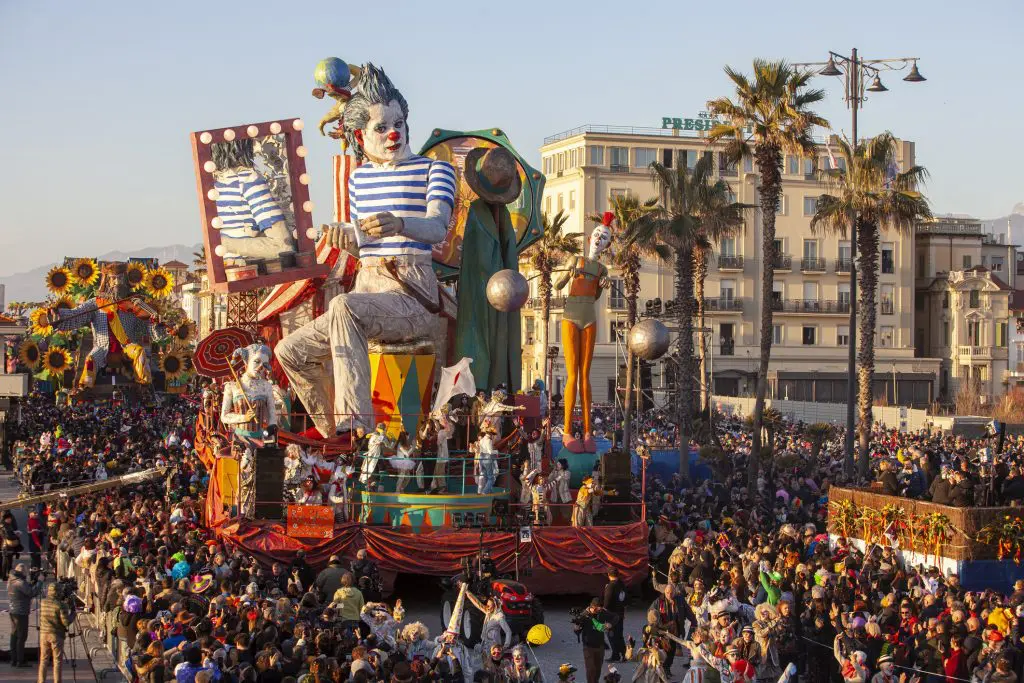
Putignano Carnival
Further south in Italy, in the region of Puglia, the Carnival of Putignano is one of the oldest, dating back to 1394.
This Carnival festivity is famous for its satirical floats, poetic performances, and exceptionally long duration, starting right after Christmas and ending on Shrove Tuesday.
For weeks, the town comes alive with theatrical performances, recitations, and plays, with a low note of political and social critique, underlying the fact that, especially nowadays, the Carnival also has a social core.
Fano Carnival
Meanwhile, the Carnival of Fano, in the Marche region, a bit up north, is known for its fun tradition of tossing sweets to the crowd from passing floats, adding a playful and delicious touch to the festivities.
Both children and adults stretch their arms and hands, or old baskets, to catch the raining candies.
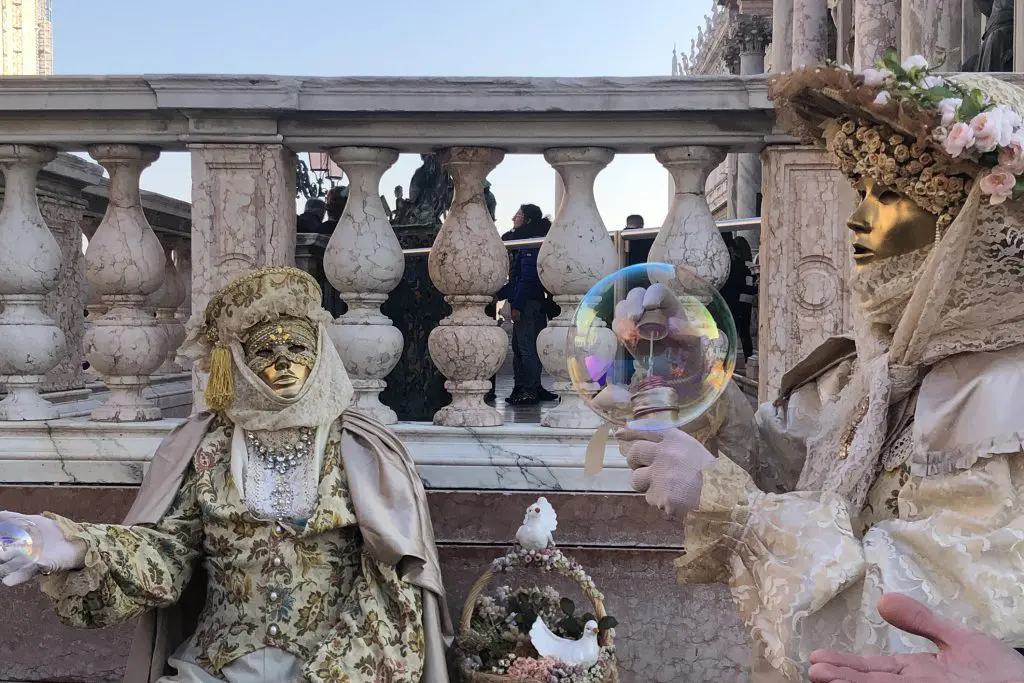
Ivrea Carnival
There is also a more dangerous Carnival in Italy, meaning people get out of the parades with bruises. We are back in the north of Italy, more precisely, Ivrea. The Carnival of Ivrea stands out for its unique and historic Battle of The Oranges.
The tradition of throwing oranges at each other has its roots in a medieval revolt. Today, it is simply a reenactment of the event and a well-organized orange-throwing battle between teams, and the fight for freedom is just recreated.
The air is thick with the scent of citrus as oranges fly through the streets, exploding into bursts of juice and pulp. Participants wear protective helmets, but that doesn’t prevent them from getting a few stinging hits.
This spectacle draws large crowds from all over the country, as people want to experience this immersive festivity, always looking out for flying oranges.
Sweet Treats To Try During Carnival in Italy
Of course, no Carnival celebration in Italy would be complete without its traditional sweets and pastries, which are an integral part of the festive experience. Every Italian region has its own specialties, but some are prepared and enjoyed across the entire country.
Chiacchiere
Among the most beloved are Chiacchiere (little talks), which, however, have different names depending on the region.
They are also called Frappe, Budgie, or Crostoli. Chiacchere are deep-fried pastries, dusted with powdered sugar, and they have a light and crispy texture.

Castagnole
Another carnival treat is Castagnole (little chestnuts). These are small, deep-fried dough balls often filled with cream or chocolate, but nowadays you can find countless flavors.

Zeppole
In some regions, particularly in Naples and Sicily, you can find Zeppole, a doughnut-like pastry that can be either fried or baked and is often filled with rich custard or ricotta cream, sometimes topped with amarena cherries.
Whether enjoyed warm from a street vendor or carefully arranged on a bakery tray, these treats are as much a part of the celebration as the masks and parades.
From the spectacular masked balls of Venice to the grandiose floats of Viareggio, and from the joyous parades to the mouthwatering pastries that fill every bakery, Carnival in Italy is a feast for the senses.
It is a time of celebration, indulgence, and tradition, where the past and present merge in a whirlwind of colors, music, and flavors, making it one of the most magical times of the year in Italy.
For those lucky enough to experience it, Carnival in Italy is not just a festival. It is a memory, a dream, a moment where reality is suspended and the extraordinary takes center stage.
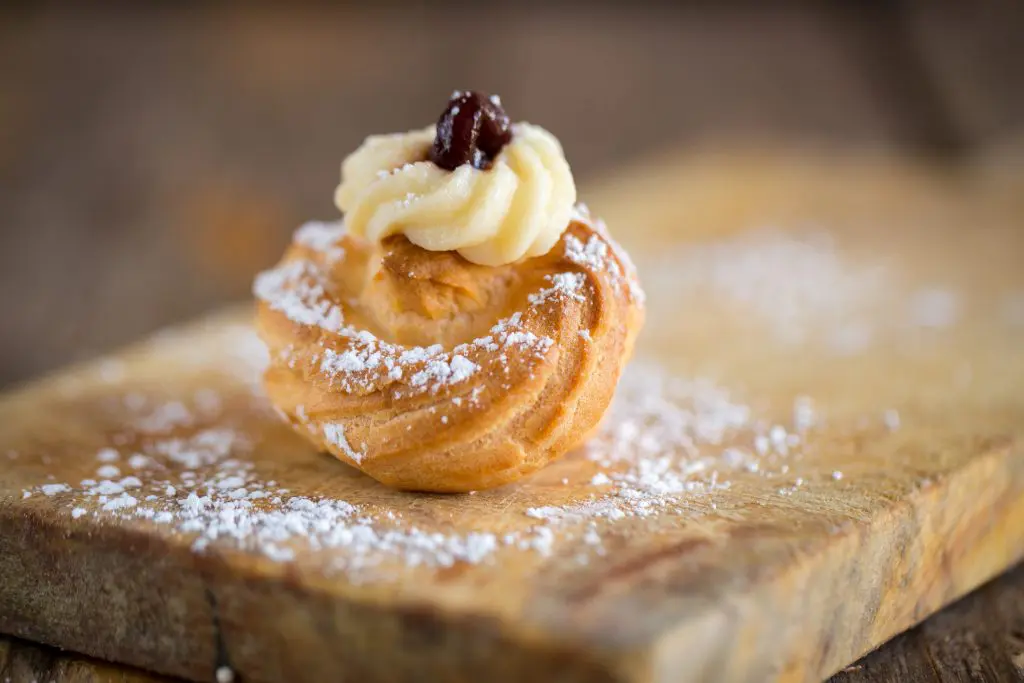

Italy Destination Expert & Rome City Host


